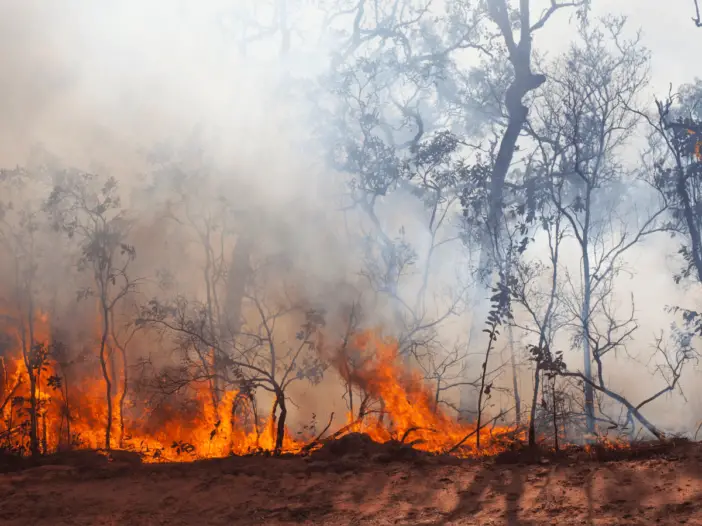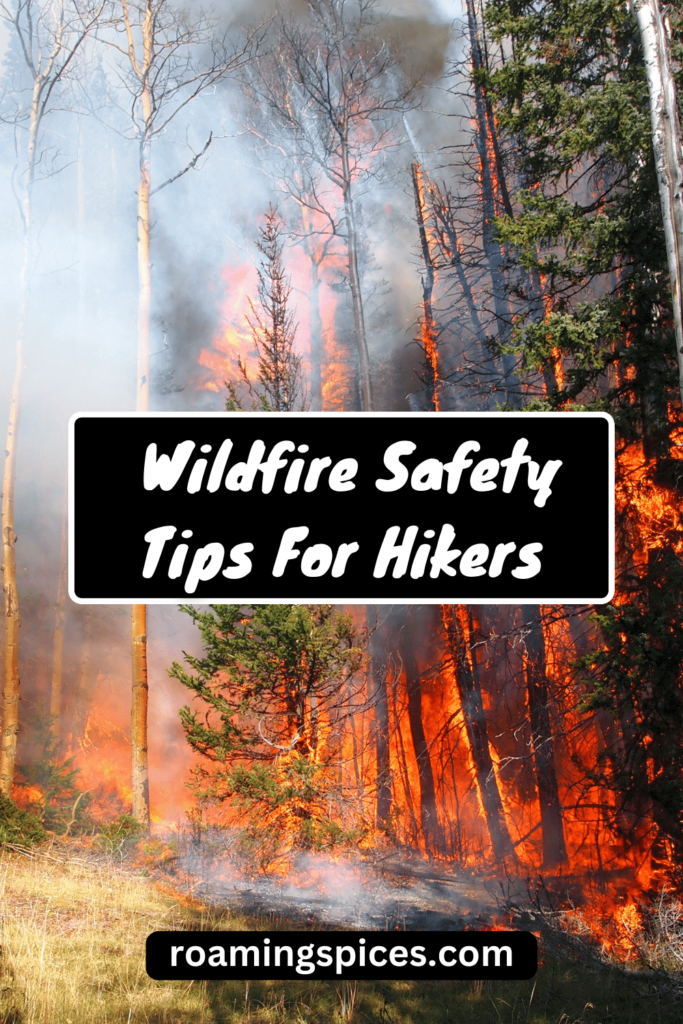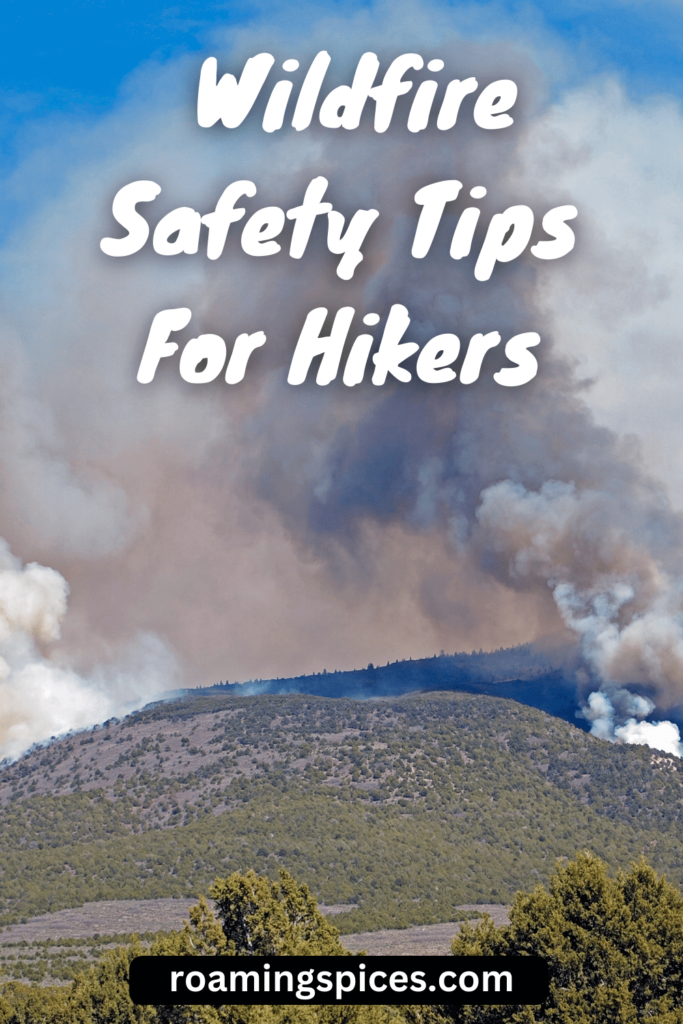
Hiking Tips
Amidst the captivating beauty of wilderness, the looming threat of wildfires casts a shadow over the adventurous spirit of hikers. In this comprehensive guide, we unfold crucial “Wildfire Safety Tips for Hikers,” offering insights that empower outdoor enthusiasts to embrace the thrill of the trail while navigating the unpredictable terrain of fire-prone landscapes responsibly and securely
Tips for Hiking in Wildfire-Prone Terrain
As breathtaking as hiking through wild landscapes can be, the increasing threat of wildfires necessitates heightened awareness and preparedness among outdoor enthusiasts.
This article delves into essential guidelines to empower hikers with the knowledge and skills to navigate through fire-prone terrain safely.
From meticulous planning and packing to choosing trails wisely, we explore the critical components of wildfire preparedness. As we venture into the intricacies of emergency protocols during a wildfire and the significance of protective gear, readers will gain valuable insights into minimising risks while embracing the great outdoors responsibly.
Focusing on environmental stewardship, we also emphasise campfire safety and the principles of leaving no trace, ensuring that the joy of hiking is coupled with a profound commitment to safeguarding ourselves and the natural world.
Preparedness Essentials: Planning and Packing for Wildfire Awareness
Preparedness is the cornerstone of any safe outdoor adventure, and when it comes to hiking in areas prone to wildfires, meticulous planning and strategic packing can make all the difference.
The first step in ensuring a safe hiking experience begins long before walking on the trail. It starts with thorough research about the chosen hiking location. Hikers should be well-informed about the region’s history of wildfires, prevailing weather conditions, and any alerts or warnings issued by local authorities.
When venturing into wildfire-prone areas, packing essentials becomes more critical than ever. A well-prepared hiker carries the usual gear like a map, compass, and sufficient water and pays special attention to items that can enhance safety during a wildfire.
A compact, portable first aid kit should be a non-negotiable inclusion, equipped with supplies to address injuries caused by burns or smoke inhalation.
Additionally, hikers must be armed with reliable communication devices, such as a fully charged cell phone and a two-way radio, to stay connected with emergency services and fellow hikers. Knowledge of escape routes and designated safe areas is imperative, as quick and informed decision-making can be a lifesaver in the event of a wildfire.
Water, an indispensable resource, should be packed in abundance. Beyond hydration, it can be valuable in extinguishing small fires and minimising personal risk. Hikers should also carry lightweight, protective clothing that covers exposed skin to guard against burns and smoke inhalation.
In essence, preparedness for wildfire awareness involves a holistic approach that combines information, gear, and proactive thinking. By adopting a mindset of thorough planning and careful packing, hikers can enjoy nature’s beauty, mitigate risks, and ensure a safe journey through wildfire-prone terrain.
When embarking on a hiking adventure through areas susceptible to wildfires, choosing the right trail is not just about picturesque landscapes and challenging terrain; it’s about understanding and mitigating potential fire risks. Navigating risky terrain requires a keen awareness of the environment and an informed decision-making process.
Firstly, hikers should research and select trails that are less prone to wildfires. This involves staying updated on local fire conditions, recent incidents, and any warnings issued by authorities.
Online resources, trail reviews, and discussions with local park rangers can provide valuable insights into the current state of fire risk in the chosen area.
While on the trail, constant vigilance is critical. Hikers must be attuned to signs of potential danger, such as dry vegetation, strong winds, or unusual smoke patterns.
It’s essential to remain flexible with plans, as conditions can change rapidly in wildfire-prone regions. Being willing to alter the route or even abandon the hike altogether is a responsible decision when confronted with heightened fire risks.
Moreover, understanding the local terrain is crucial. Certain landscapes, like dense forests or dry grasslands, pose a higher fire risk than others. Hikers should adapt their trail choices based on the specific features of the area, opting for routes that provide escape options, open spaces, and minimised exposure to densely vegetated regions.
Educating oneself about fire awareness is a fundamental aspect of navigating risky terrain. Knowing how wildfires behave, understanding the role of wind in their spread, and recognising early signs of ignition can empower hikers to make informed choices during their journey.
By choosing trails wisely and staying alert to environmental cues, hikers contribute to their safety and preserve the wilderness they explore.
Emergency Protocols: What to Do When Wildfire Strikes
Understanding and following emergency protocols is paramount for personal safety when hiking in wildfire-prone areas. In the unfortunate event of a wildfire strike, hikers must have a clear action plan to navigate the potentially life-threatening situation.
First and foremost, maintaining a calm and collected demeanour is essential. Panic can cloud judgment, making it difficult to make rational decisions. If smoke is detected or flames are visible, hikers should immediately assess their surroundings and identify the nearest escape routes.
A mental map of the terrain and previously noted safe areas can be invaluable in these critical moments.
Communication becomes a lifeline during a wildfire emergency. Hikers should use their mobile phones or two-way radios to contact emergency services and inform them of their location, group size, and the current situation.
If connectivity is compromised, signalling devices such as whistles or brightly coloured clothing can help attract attention from rescue teams or fellow hikers.
Evacuation should be swift and deliberate. Hikers must move perpendicular to the direction of the fire if possible, as fire tends to spread with the wind. Seeking out natural barriers like rivers or clearings can provide temporary refuge.
As a last resort, finding a pre-cleared area devoid of vegetation and lying low to the ground to minimise smoke inhalation is a survival tactic.
Staying informed about the latest weather updates and fire alerts before hiking is essential. By internalising emergency protocols and having a well-practised plan, hikers can increase their chances of safely navigating through a wildfire incident and minimising risks to themselves and their fellow adventurers.
Gear and Attire: Protective Measures Against Wildfire Elements
Ensuring the right gear and attire can be a lifesaver when venturing into wildfire-prone terrain. Protective measures against wildfire elements should be at the forefront of a hiker’s preparation, encompassing clothing and equipment.
Appropriate clothing is a fundamental line of defence. Hikers should opt for long-sleeved shirts and long pants made from lightweight, breathable, and fire-resistant materials. Synthetic fabrics or treated natural fibres can provide extra protection against burns and ember exposure.
A wide-brimmed hat and gloves can shield the face and hands from radiant heat, while sturdy, ankle-high boots offer essential foot protection in ember-filled terrain.
Equally crucial is the gear designed to counteract the effects of wildfire. An N95 respirator mask can guard against inhaling harmful smoke particles, providing relief in smoky conditions.
Goggles or sunglasses protect the eyes from ash and debris, ensuring clear vision during evacuation. Carrying a compact, well-equipped first aid kit, with specific items for treating burns and smoke inhalation, is non-negotiable.
Hikers should also consider having a lightweight emergency shelter in their backpacks, such as a fire-resistant tent or a reflective space blanket. These can serve as a temporary refuge in case evacuation routes are compromised.
Being prepared with the right gear and attire enhances personal safety and contributes to a more efficient and coordinated response in the face of a wildfire. Prioritising fire-resistant clothing and essential protective equipment should be ingrained in every hiker’s checklist when exploring areas at risk of wildfires.
Environmental Responsibility: Campfire Safety and Leave No Trace Principles
Environmental responsibility is a shared duty among hikers, especially in wildfire-prone areas, and it involves adhering to campfire safety guidelines and practising Leave No Trace principles. Respecting the wilderness ensures the safety of the immediate surroundings and minimises the risk of human-caused wildfires.
Campfire safety begins with recognising and following any fire restrictions in the area. Before hiking, hikers should check with local authorities for current regulations. Campfires might be prohibited in fire-prone regions, requiring hikers to rely on alternative methods for cooking and warmth.
Selecting a safe and established fire ring is crucial when campfires are allowed. Clearing flammable material from the vicinity and maintaining a safe distance from vegetation helps prevent accidental sparks and embers from igniting nearby foliage.
Extinguishing the fire completely before leaving the campsite is a non-negotiable step. Pouring water over the embers and stirring the ashes ensures no residual heat remains.
Leave No Trace principles further underscore responsible outdoor behaviour. Hikers should aim to minimise their environmental impact, avoiding unnecessary disturbance to flora and fauna. This includes refraining from picking plants, staying on designated trails, and properly disposing of waste.
In fire-prone areas, adhering to Leave No Trace principles extends to preventing wildfires caused by human negligence. Hikers must refrain from discarding cigarette butts, using fireworks, or engaging in any activity that could potentially ignite a fire.
By fostering an ethos of environmental responsibility, hikers contribute to preserving natural landscapes, ensuring that future generations can also enjoy the beauty of the outdoors without compromising safety or ecological balance.
Conclusion: Wildfire Safety Tips for Hikers
In conclusion, the allure of hiking through nature’s wonders should always be accompanied by a deep-seated commitment to safety and environmental responsibility, especially in wildfire-prone areas.
Our exploration of “Wildfire Safety Tips for Hikers” underscores the importance of meticulous preparation, informed decision-making on the trail, and adherence to emergency protocols.
Equipping oneself with the right gear and attire becomes a shield against the unpredictable elements of a wildfire, ensuring hikers can navigate through potential dangers with resilience.
By embracing Leave No Trace principles and responsible campfire practices, outdoor enthusiasts can contribute to preserving our natural landscapes.
As we embark on adventures, let these guidelines remind us that harmonious coexistence with nature demands the joy of exploration and a steadfast commitment to safety and environmental stewardship.
Like Our Article? Please Pin it!



Leave a Reply